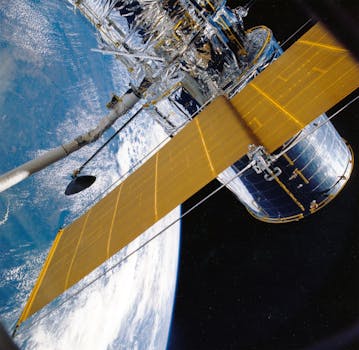
The Future of Satellites: Revolutionizing Global Connectivity and Exploration. The future of satellites holds immense promise, with advancements in technology and innovation poised to revolutionize global connectivity, exploration, and our understanding of the universe. Satellites have been a crucial part of our daily lives, providing us with navigation, communication, and weather forecasting, among other services. As we look to the future, it’s exciting to consider the potential advancements and innovations that will shape the satellite industry.
One of the most significant developments in the future of satellites is the proliferation of small satellites, also known as smallsats. These compact satellites are typically smaller than a refrigerator and weigh less than 500 kilograms, making them more affordable and easier to launch than traditional satellites. Smallsats are being used for a variety of applications, including Earth observation, communication, and scientific research. Companies like Planet Labs and DigitalGlobe are already using smallsats to provide high-resolution images of the Earth, which are being used for applications such as crop monitoring, disaster response, and urban planning.
Another area of innovation in the satellite industry is the development of satellite constellations. A satellite constellation is a group of satellites that work together to provide global coverage and connectivity. Companies like SpaceX and OneWeb are launching thousands of small satellites into low Earth orbit to provide high-speed internet access to remote and underserved communities. These constellations have the potential to revolutionize global connectivity, enabling people to access the internet and communicate with others from anywhere in the world.
In addition to advancements in satellite technology, there are also significant developments in the field of space exploration. NASA and other space agencies are planning to return humans to the Moon and eventually send them to Mars, with satellites playing a critical role in these missions. Satellites will be used to provide communication, navigation, and scientific instrumentation for these missions, and will also serve as a stepping stone for further exploration of the solar system.
Furthermore, the future of satellites also holds promise for advancing our understanding of the universe. Next-generation telescopes, such as the James Webb Space Telescope and the Square Kilometre Array, will be used to study the universe in unprecedented detail, from the formation of the first stars and galaxies to the detection of dark matter and dark energy. These telescopes will rely on satellites to provide the necessary communication and navigation capabilities to transmit their findings back to Earth.
Finally, the future of satellites also raises important questions about regulation and policy. As the number of satellites in orbit increases, there is a growing need for regulations to ensure the long-term sustainability of space activities. The development of satellite constellations, for example, raises concerns about space debris and the potential for collisions between satellites. Governments and industry leaders will need to work together to develop and implement regulations that balance the need for innovation and progress with the need to protect the environment and ensure public safety.
In conclusion, the future of satellites is exciting and full of promise. From the proliferation of small satellites to the development of satellite constellations, advancements in space exploration, and the potential for advancing our understanding of the universe, the possibilities are endless. As we look to the future, it’s clear that satellites will play an increasingly important role in shaping our world and our place in the universe.
The impact of satellites on our daily lives will be significant, from providing global connectivity and enabling remote communities to access the internet, to advancing our understanding of the universe and the environment. As the satellite industry continues to evolve and innovate, it’s essential that we prioritize regulation and policy to ensure the long-term sustainability of space activities and protect the environment and public safety.
With the continued advancement of technology and innovation, the future of satellites is looking brighter than ever. Whether it’s providing communication, navigation, or scientific instrumentation, satellites will remain a vital part of our daily lives and our continued exploration of the universe. As we embark on this exciting journey, it’s essential that we prioritize collaboration, regulation, and sustainability to ensure that the benefits of satellites are shared by all and that we protect the environment and public safety for future generations.